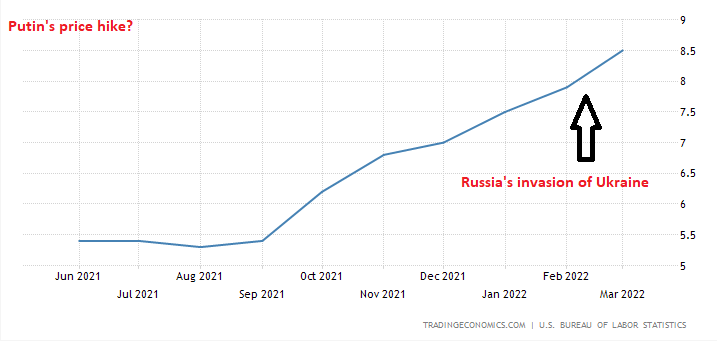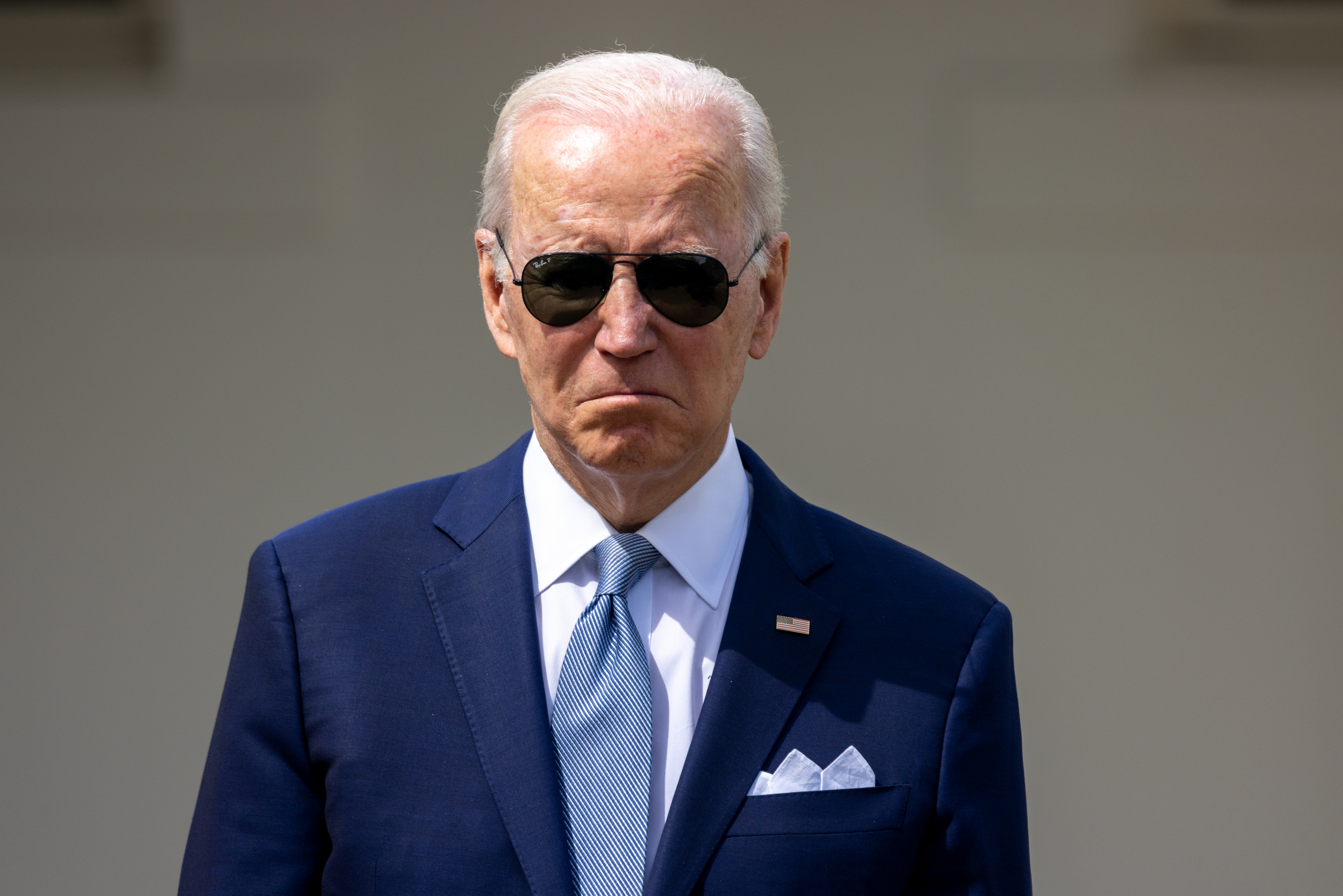The US annual inflation rate hit 8.5% in March, topping the market forecast of 8.4%. The White House attempted to brace the country for the soaring prices at a pre-report news conference, calling it an “extraordinarily elevated” reading of America’s cost-of-living crisis. But rather than admit that the administration’s policies and the Federal Reserve’s monetary expansion contributed to the mess, US officials passed the buck onto a convenient scapegoat and the world’s main enemy for the time being: Russian President Vladimir Putin. But is Putin responsible for America’s inflationary crisis, or did the ineptitude of the Swamp manufacture this environment of high prices and disintegrating purchasing power?
A Timeline of Incompetence
In March 2021, Treasury Secretary Janet Yellen dismissed concerns that the $1.9 trillion American Rescue Plan would contribute to inflation, telling MSNBC that these fears were misplaced. Yellen told the left-leaning cable news network that she did not think rising inflation “is going to happen,” adding that “there was no sign of inflation increasing.”
Two months later, Yellen told a virtual event hosted by The Atlantic that she did not see any inflation problem transpiring. At a separate Wall Street Journal CEO Council event, Yellen also stated that “I don’t think there’s going to be an inflationary problem.”
When the United States started singing “Summer in the City,” the former head of the Federal Reserve insisted that the upward push in inflation was transitory and that it would eventually subside. By the fall, she reiterated that elevated inflation would prove to be transitory. Before the country welcomed Santa Claus with open arms, the head of the Treasury Department abandoned the transitory shtick.
 But it was not only Yellen who parroted this poppycock. President Joe Biden noted throughout 2021 that rampant price inflation would be temporary, adding that he had confidence in the Federal Reserve to employ the necessary measures to curb any price pressures.
But it was not only Yellen who parroted this poppycock. President Joe Biden noted throughout 2021 that rampant price inflation would be temporary, adding that he had confidence in the Federal Reserve to employ the necessary measures to curb any price pressures.
“As our economy comes roaring back, we’ve seen some price increases,” Biden said at a news conference in July. “I want to be clear: my administration understands that were we ever to experience unchecked inflation in the long term, that would pose a real challenge for our economy. While we’re confident that isn’t what we’re seeing today, we’re going to remain vigilant about any response that is needed.”
It turns out that faith in the central bank was entirely incorrect. Fed Chair Jerome Powell got it completely wrong, much like the folks in the administration. Powell and Fed economists evolved on the subject, initially dismissing any inflation threats and then calling high inflation “frustrating” but temporary. By December, he finally retired the idea of “temporary” inflation.
Even when it was clear that sky-high inflation had arrived at America’s doorsteps, the administration was dismissive and even mendacious. White House Chief of Staff Ron Klain labeled inflation and supply chains “high-class problems.” Press Secretary Jen Psaki called it “the tragedy of the treadmill” and suggested a critical cause of inflation was corporate greed. Brian Deese, the director of the National Economic Council, suggested that inflation was only high because items causing higher prices were being calculated.
What Caused Inflation, Anyway?
Put simply, the root causes of four-decade high inflation are simple: fiscal stimulus that started with the CARES Act and continued with the American Rescue Plan (ARP) and the trillions of dollars the Fed injected into the system through near-zero interest rates and asset purchases. In addition, the inflation troubles were exacerbated by the global supply chain crisis as global demand strengthened, inventories were depleted, and production failed to keep up with everyone wanting everything simultaneously.
 This does not mean the military conflict in Eastern Europe has not played a role in today’s substantial inflation jump. Russia, the world’s largest energy exporter and wheat producer, invading Ukraine, a critical energy transit route and fourth-largest wheat producer, has significantly added to inflation pressures, particularly in the fields of crude oil, natural gas, and food. Moscow has banned fertilizer shipments, the West has ceased or gradually decreased reliance on Russia’s petroleum products, and chaos in the region has added to supply chain issues.
This does not mean the military conflict in Eastern Europe has not played a role in today’s substantial inflation jump. Russia, the world’s largest energy exporter and wheat producer, invading Ukraine, a critical energy transit route and fourth-largest wheat producer, has significantly added to inflation pressures, particularly in the fields of crude oil, natural gas, and food. Moscow has banned fertilizer shipments, the West has ceased or gradually decreased reliance on Russia’s petroleum products, and chaos in the region has added to supply chain issues.
However, President Biden has perpetuated this myth that inflation was non-existent until Russia’s military excursion into its western neighbor, relying on the “Putin’s price hike” catchphrase. Gasoline prices were already surging before the war. A food crisis was brewing prior to February. Nearly every segment of the post-pandemic economy had endured rising prices. But this history ostensibly never happened. It was all Putin’s fault, even in June 2021.
Inflation Peak
The line from the administration and the Eccles Building is that inflation will come down heading into 2023. Not everyone agrees with that prognostication. Many market analysts and economists are in this position: inflation will remain elevated in 2022 and stay well above the key 2% target rate in 2023. Others have also alluded to several caveats: China’s COVID Zero strategy that would add to supply chain problems, the Federal Reserve being behind the curve, the Ukraine-Russia war, and lackluster food and energy output. Even if the official forecast were accurate, the inflation pain would be felt for a long time, especially considering how many low- and middle-income households are grappling with higher prices across the board, from baby food to pet food. Whatever happens, the truth is that the supposed smartest men and women in the nation’s capital failed the American people.




